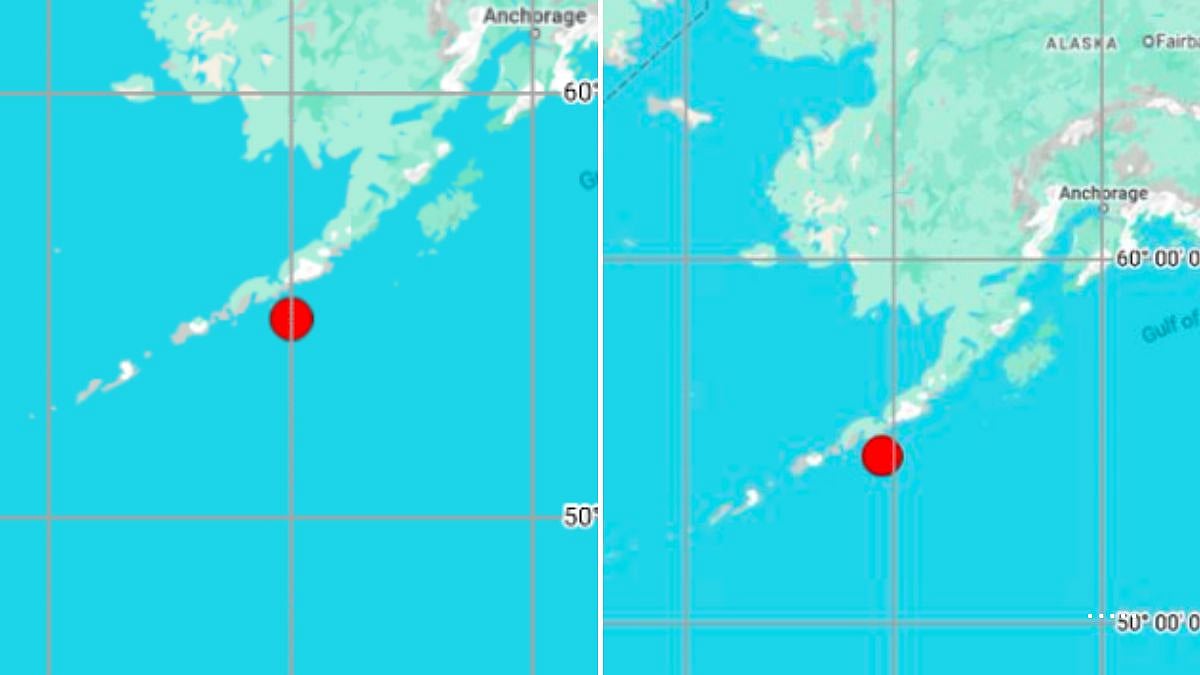Alaska Peninsula Hit By 6.2 Magnitude Earthquake Days After 7.3 Tremor; Tsunami Warning Issued
Earlier on July 17, an earthquake of magnitude 7.3 on the Richter Scale rattled Alaska, a statement by the National Center for Seismology (NCS) said.

An earthquake of magnitude 6.2 struck Alaska on Monday. | X @NCS_Earthquake
Alaska: An earthquake of magnitude 6.2 struck Alaska on Monday, a statement by the National Center for Seismology (NCS) said.
As per the statement, the earthquake struck at a shallow depth of 48km, making it susceptible to aftershocks.
In a post on X, the NCS said, "EQ of M: 6.2, On: 21/07/2025 03:58:02 IST, Lat: 54.99 N, Long: 159.98 W, Depth: 48 Km, Location: Alaska Peninsula."
Earlier on July 17, an earthquake of magnitude 7.3 on the Richter Scale rattled Alaska, a statement by the National Center for Seismology (NCS) said.
ALSO READ
As per the NCS, the massive earthquake occurred at a shallow depth of 36km, making it susceptible to aftershocks.
In a post on X, the NCS said, "EQ of M: 7.3, On: 17/07/2025 02:07:42 IST, Lat: 54.91 N, Long: 160.56 W, Depth: 36 Km, Location: Alaska Peninsula."
Shallow earthquakes are generally more dangerous than deep earthquakes. This is because the seismic waves from shallow earthquakes have a shorter distance to travel to the surface, resulting in stronger ground shaking and potentially more damage to structures and greater casualties.
A tsunami warning was issued for parts of coastal Alaska after an earthquake in the Gulf of Alaska, according to the US Tsunami Warning System, The New York Times reported.
ALSO READ
A tsunami warning is the most urgent alert issued by the National Weather Service in the United States, and it means that people should move to higher ground or go inland. A tsunami advisory means people should get out of coastal waters and stay away from beaches and waterways. A tsunami watch means experts are evaluating the threat, so stay tuned for further information.
The Alaska-Aleutian subduction system is one of the most seismically active globally, producing more >M8 earthquakes over the last century than any other. Many of these earthquakes, as well as coastal and submarine landslides, create tsunamis. The region contains over 130 volcanoes and volcanic fields, and contains well over three-quarters of US volcanoes that have erupted in the last two hundred years.
(Except for the headline, this article has not been edited by FPJ's editorial team and is auto-generated from an agency feed.)
RECENT STORIES
-
-
-
-
-